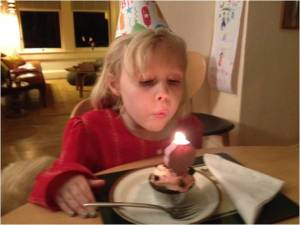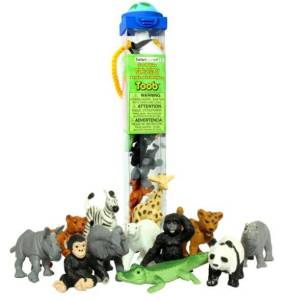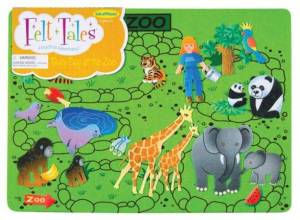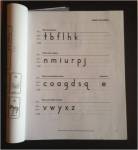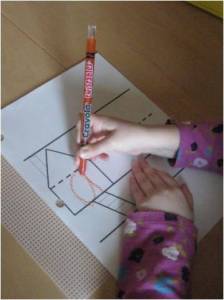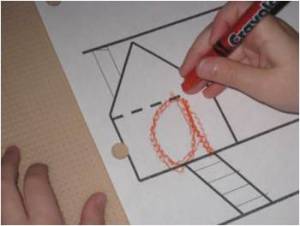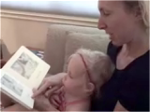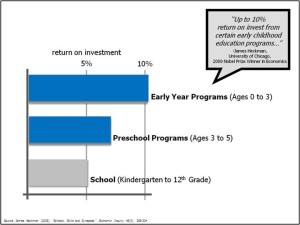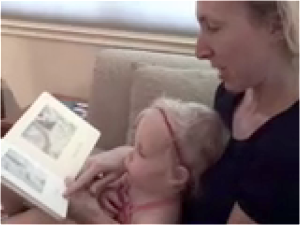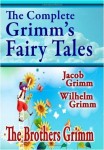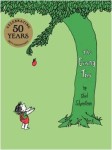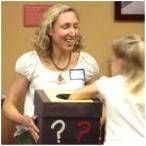One of my favorite things to do is create learning games. This one was inspired in the aisle of the Target dollar aisle. Inspiration lies in every bin for teaching materials and learning games. Especially, when I have specific skills I know I need to work on with certain students.
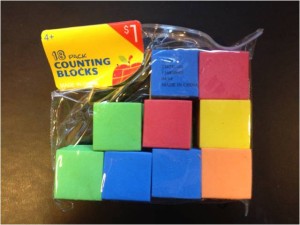 My walk down the aisle last week inspired a game that I call Word Family Mystery Box Grab. (Please don’t trademark this.) My inspiration came in the form of primary colored counting blocks – 18 per bag – the red blocks for vowels – all the other colors for the consonants letters. When I teach vowels, I always differentiate them from consonants by making them the color red.
My walk down the aisle last week inspired a game that I call Word Family Mystery Box Grab. (Please don’t trademark this.) My inspiration came in the form of primary colored counting blocks – 18 per bag – the red blocks for vowels – all the other colors for the consonants letters. When I teach vowels, I always differentiate them from consonants by making them the color red.
To make the game, first identify the word family you want to work on. The “at” family of words is a great place to start with your child. (Think about all of those great books for your child about cats and hats!) Start by making your child’s game by writing the letter “a” on the red block, on both sides, and the letter “t” on the other consonant blocks – any color other than red.
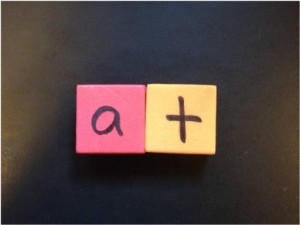 Then make letter blocks that your child will choose as the first sound of an “at” word. These consonant letters will make real words when added to the start of your new “at” blocks. For example, you can add the letter “c” to “at” to create the word “cat”. It can be fun to throw in a letter or two that doesn’t make a real word is fun, like “g” added before “at”. It will help your child gain confidence reading any word, even if, as one of my five-year-old students told me, “It’s a nonsense word.”
Then make letter blocks that your child will choose as the first sound of an “at” word. These consonant letters will make real words when added to the start of your new “at” blocks. For example, you can add the letter “c” to “at” to create the word “cat”. It can be fun to throw in a letter or two that doesn’t make a real word is fun, like “g” added before “at”. It will help your child gain confidence reading any word, even if, as one of my five-year-old students told me, “It’s a nonsense word.”
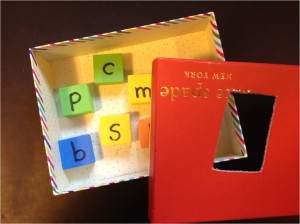 Next put all the initial consonant letters in a box with an opening in the top. The opening should be big enough for your child to use his or her little hand to pull each letter out one at a time. (You can use a bag, too.) Before you start the game, lay out the two blocks that represent “at” middle letter vowel sounds and final consonant letter sound. Put all of your blocks for letters that can go in front of “at” in your bag or box.
Next put all the initial consonant letters in a box with an opening in the top. The opening should be big enough for your child to use his or her little hand to pull each letter out one at a time. (You can use a bag, too.) Before you start the game, lay out the two blocks that represent “at” middle letter vowel sounds and final consonant letter sound. Put all of your blocks for letters that can go in front of “at” in your bag or box.
The game begins when you ask your child to pull a letter out, add it to the “at” part, and then read the word. Next, have your child hand you the first letter sound block, and then pick another letter sound block to start a new word again. Repeat until the box is empty.
Multiple children can take turns and tally how many words they spell and read, or your child can play with you. Except when you build your word, have your child read the word to you.
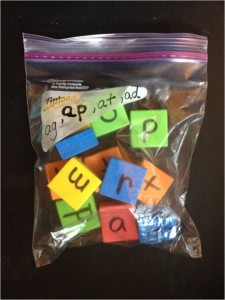 I love this game because you can use any vowel-pattern, word family you want. I recommend starting with the short “a” word families and then try other vowel-pattern, word families. Some suggestions for when your child masters “at”: try “ad”, “ag”, “ap”, or “ack” word families. Organize your word families using Ziploc bags – to identify each word family and separate the specific letters that go with each family.
I love this game because you can use any vowel-pattern, word family you want. I recommend starting with the short “a” word families and then try other vowel-pattern, word families. Some suggestions for when your child masters “at”: try “ad”, “ag”, “ap”, or “ack” word families. Organize your word families using Ziploc bags – to identify each word family and separate the specific letters that go with each family.
Here is one game inspired by the dollar aisle.
What are some simple reading games that you have created for your kids?
Like this:
Like Loading...
